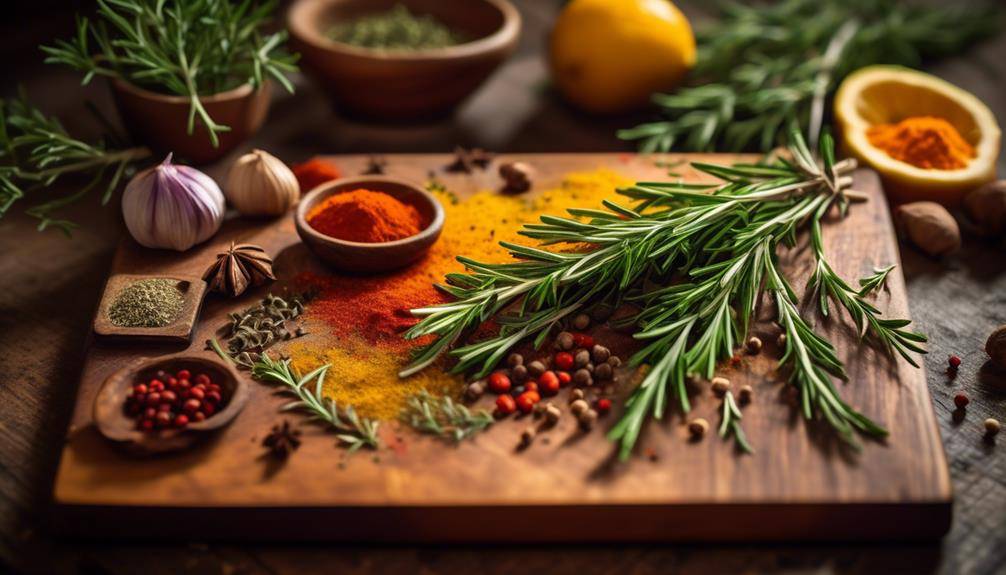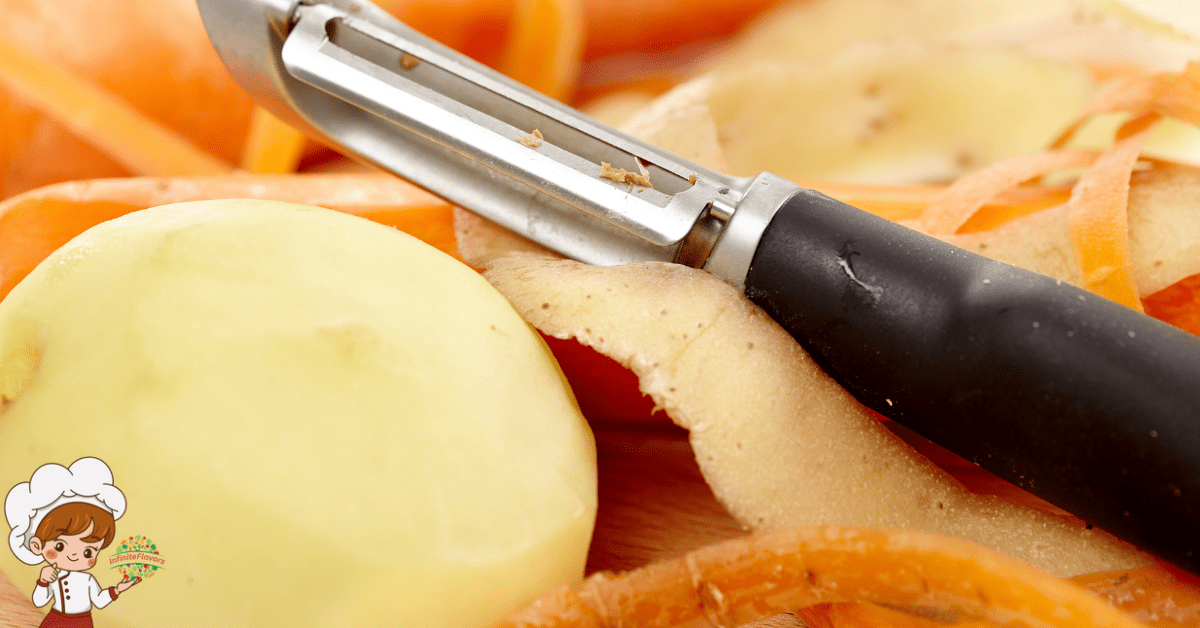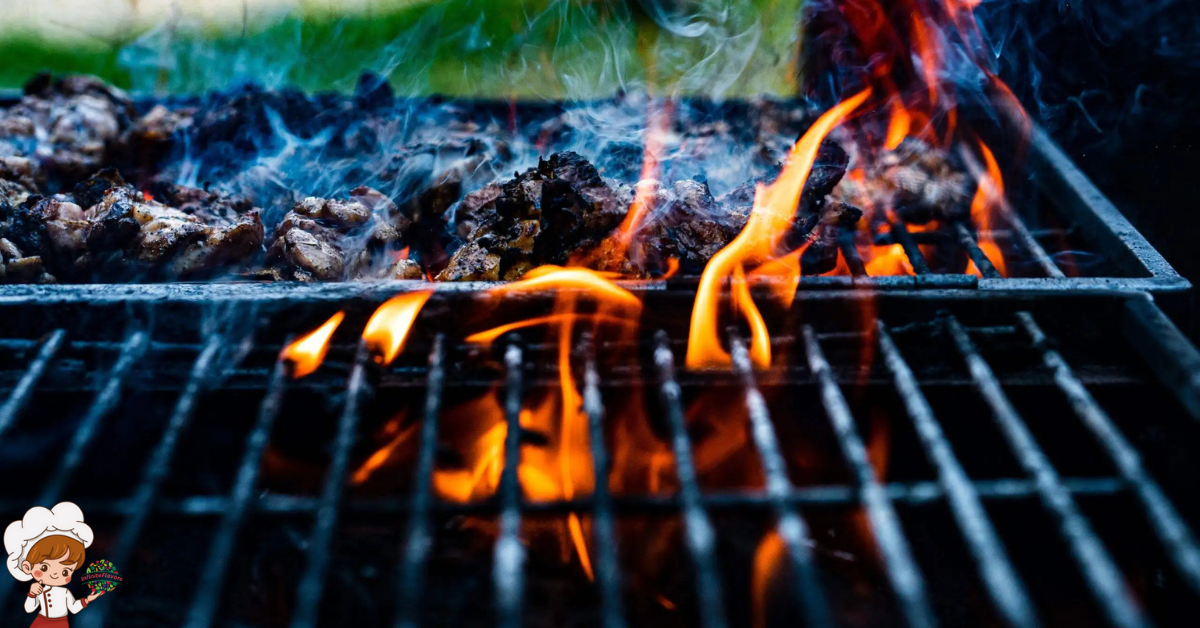The Best French Culinary Herbs And Spices

The Best French Culinary Herbs And Spices; Step into the fragrant world of French culinary herbs and spices, where each ingredient adds a unique touch to the art of cooking. Like a symphony of flavors, these herbs and spices dance together, creating a harmonious melody on your taste buds. But what makes these ingredients truly special? What secrets lie within each herb and spice, waiting to be unlocked? Let’s take a journey through the rich tapestry of French cuisine and discover the tantalizing allure of thyme, lavender, rosemary, tarragon, anise, fennel seeds, and bay leaves. Prepare to be captivated by the enticing aromas and flavors that await.
The History of French Culinary Seasonings
French culinary seasonings have a rich and storied history, intricately woven into the vibrant tapestry of the country’s gastronomic heritage. The origins of French culinary seasonings can be traced back to ancient times when the use of herbs and spices in cooking was not only a means of adding flavor but also a way to preserve food. In fact, the ancient Egyptians and Romans believed that certain herbs had medicinal properties and would use them to enhance the taste and nutritional value of their meals.
One of the most well-known traditional French herb blends is the herbes de Provence. This aromatic blend typically includes a combination of thyme, rosemary, oregano, marjoram, and savory. These herbs are often dried and mixed together, creating a fragrant and versatile seasoning that is used in a wide range of dishes, from roasted meats to grilled vegetables.
Another popular French herb blend is fines herbes, which consists of delicate herbs such as parsley, chives, tarragon, and chervil. This blend is often used to enhance the flavors of delicate dishes like eggs, fish, and light sauces. The fines herbes add a fresh and vibrant touch to these dishes, elevating them to a whole new level of culinary excellence.
Over the years, French culinary seasonings have evolved and adapted to the changing tastes and preferences of the people. New herb blends have emerged, incorporating flavors from different regions of France and even from other parts of the world. Despite these changes, the traditional herb blends continue to be an integral part of French cuisine, preserving the essence of their rich history and contributing to the exquisite flavors that make French food so renowned.
Understanding the Importance of Fresh Herbs
When it comes to cooking, using fresh herbs is essential for enhancing the flavors of your dishes. Fresh herbs have a vibrant and aromatic quality that dried herbs simply cannot replicate. Not only do they add depth and complexity to your food, but they also provide a range of health benefits, including potential aromatherapy benefits and added nutritional value.
Flavor Enhancement
Fresh herbs are essential in enhancing the flavors of French cuisine. Flavor pairing plays a crucial role in French cooking, and fresh herbs are the perfect way to elevate the taste of any dish. By combining herbs with specific ingredients, you can create a harmonious blend of flavors that will tantalize your taste buds. Whether you’re using thyme to enhance the earthiness of mushrooms or basil to brighten the sweetness of tomatoes, fresh herbs add depth and complexity to French dishes.
Additionally, knowing the right cooking techniques to release the maximum flavor from herbs is essential. For example, gently crushing herbs like rosemary or bruising mint leaves before adding them to a dish helps to release their aromatic oils, intensifying their flavor. So, don’t underestimate the power of fresh herbs in enhancing the flavors of your favorite French recipes.
Aromatherapy Benefits
Using fresh herbs in your cooking not only enhances the flavors of your dishes but also provides numerous aromatherapy benefits. Aromatherapy is the practice of using essential oils and plant extracts to promote physical and mental well-being. When you incorporate fresh herbs into your cooking, the aromatic compounds are released, filling your kitchen with delightful scents that can have a positive impact on your mood and overall sense of well-being. The aromatherapy benefits of fresh herbs extend beyond the kitchen as well.
Many herbs are used in skincare products due to their healing and rejuvenating properties. For example, lavender is known for its calming and soothing effects, making it a popular ingredient in skincare products designed to promote relaxation. Rosemary is often used in skincare products for its antibacterial and anti-inflammatory properties. So, not only can you elevate the flavors of your dishes with fresh herbs, but you can also experience the therapeutic benefits they offer in aromatherapy and skincare.
Nutritional Value
Incorporating fresh herbs into your culinary creations not only enhances the flavors of your dishes, but also provides a wealth of nutritional value. French culinary herbs and spices are not just used for taste, but they also offer numerous health benefits. Here are three ways in which these herbs and spices can contribute to your overall well-being:
- Culinary uses of herbs and spices for health benefits: French culinary herbs like thyme, rosemary, and oregano are known for their antibacterial and antiviral properties. They can help boost your immune system and fight off infections.
- Exploring the antioxidant properties of French culinary seasonings: Many French herbs and spices, such as sage, parsley, and tarragon, are rich in antioxidants. These compounds help protect your body from free radicals, which can cause damage to cells and contribute to aging and disease.
- Nutritional value of fresh herbs: Fresh herbs are a great source of vitamins, minerals, and fiber. For example, basil contains vitamin K, which is important for blood clotting, while cilantro is rich in vitamin C, which supports immune function.
Exploring the Versatility of Thyme
Thyme is a versatile herb that plays a prominent role in Mediterranean cuisine. Its earthy and slightly minty flavor adds depth to a variety of dishes, from roasted vegetables to grilled meats. Not only does thyme enhance the taste of your food, but it also offers numerous health benefits, such as being rich in antioxidants and having anti-inflammatory properties. Whether you use it fresh or dried, thyme is a must-have herb in your culinary arsenal.
Thyme in Mediterranean Cuisine
With its vibrant aroma and robust flavor, thyme effortlessly elevates the dishes of Mediterranean cuisine, making it an indispensable herb in the culinary repertoire. Here are three reasons why thyme is a staple in Mediterranean cooking:
- Mediterranean Diet: Thyme perfectly complements the fresh and healthy ingredients of the Mediterranean diet. Its earthy and slightly minty taste adds depth to dishes like Greek salads, roasted vegetables, and grilled fish.
- Traditional Recipes: Thyme is a key ingredient in many traditional Mediterranean recipes. From the famous Italian pasta sauce, marinara, to the aromatic French herb blend, herbes de Provence, thyme brings a distinct flavor that enhances the authenticity of these dishes.
- Versatile Use: Thyme’s versatility allows it to be used in a variety of Mediterranean dishes. Whether it’s sprinkled on top of pizzas, infused in olive oil for dipping bread, or added to stews and soups, thyme adds a unique and delightful flavor to any dish.
Health Benefits of Thyme
Harness the power of thyme’s versatility as we explore its numerous health benefits, making it an essential addition to any well-rounded culinary repertoire. Thyme, with its aromatic and earthy flavor, not only enhances the taste of your dishes but also offers a range of health benefits. This herb is packed with vitamins, minerals, and antioxidants that support overall wellness.
Thyme is known for its antibacterial and antifungal properties, making it effective in fighting infections. It also contains compounds that may help alleviate respiratory issues, such as coughs and congestion. Furthermore, thyme has been found to have anti-inflammatory properties and may aid in digestion. With its wide array of culinary uses, from marinades to soups and stews, thyme is a versatile herb that can elevate both the taste and health benefits of your meals.
Culinary Uses of Thyme
Discover the myriad ways in which thyme can enhance your culinary creations with its versatile flavor profile and aromatic essence. This herb, with its earthy and slightly minty taste, can elevate the taste of a wide variety of dishes. Here are three culinary benefits and cooking techniques that showcase the versatility of thyme:
- Seasoning: Thyme is a fantastic herb for seasoning meats, such as chicken, lamb, or beef. Its robust flavor complements the richness of the meat, adding depth and complexity to the dish.
- Infusions: Thyme-infused oils and vinegars are excellent additions to your pantry. Use them to drizzle over salads, roasted vegetables, or even to marinate fish. The infusion process allows the flavors of thyme to infuse into the oil or vinegar, creating a unique taste.
- Aromatics: Add a few sprigs of thyme to your soups, stews, and sauces to infuse them with a wonderful aroma. The fragrance of thyme can transform a simple dish into a culinary masterpiece.
With its culinary benefits and diverse cooking techniques, thyme is an essential herb in any kitchen. Experiment with this versatile herb and discover the many ways it can enhance your dishes.
The Delicate Aroma of Lavender in French Cuisine
The enchanting scent of lavender delicately enhances the flavors of French cuisine, transporting your taste buds to the picturesque fields of Provence. Lavender, with its beautiful purple flowers, is not only a visually stunning herb but also a versatile ingredient in French cooking. Its unique aroma adds a subtle floral note that complements both sweet and savory dishes.
In French cuisine, lavender is primarily used as a culinary herb in desserts and baked goods. Its delicate flavor pairs well with honey, citrus, and vanilla, adding a touch of elegance to dishes like lavender-infused crème brûlée, lavender shortbread cookies, and lavender-scented macarons. Lavender can also be used to flavor ice creams, sorbets, and syrups, creating refreshing treats with a hint of Provencal charm.
When it comes to growing lavender for culinary purposes, there are a few techniques to keep in mind. Lavender thrives in well-drained soil and requires full sun to develop its essential oils. The soil should be slightly alkaline, with a pH level between 6.5 and 7.5. It is important to prune the plants regularly to promote bushy growth and prevent them from becoming woody. Harvesting lavender should be done when the flowers are fully open but before they start to fade. The flowers can be dried and stored for future use in the kitchen.
The delicate aroma of lavender adds a touch of sophistication to French cuisine. Whether used in sweet or savory dishes, this fragrant herb elevates the flavors and transports you to the idyllic countryside of Provence. So, why not embrace the romance of lavender and experiment with this versatile herb in your own culinary creations?
Elevating Flavors With Fragrant Rosemary
When it comes to elevating flavors in French cuisine, fragrant rosemary is a culinary powerhouse you don’t want to overlook. With its distinctive aroma and versatile nature, rosemary has the ability to enhance a wide range of dishes. Whether you’re adding it to roasted meats, vegetables, or even breads, this aromatic herb brings a depth of flavor that is both comforting and enticing.
Rosemary: Aromatic and Versatile
Enhance your culinary creations with the aromatic and versatile herb, rosemary, as it adds depth and complexity to your dishes. Known for its robust flavor and distinct scent, rosemary has a long history of culinary use. Here are three reasons why rosemary is a must-have herb in your kitchen:
- Aromatic properties: The strong, pine-like fragrance of rosemary can instantly elevate the aroma of any dish. Whether you’re roasting meats, sautéing vegetables, or baking bread, the scent of rosemary will fill your kitchen and tantalize your taste buds.
- Culinary applications: Rosemary pairs well with a variety of ingredients, making it a versatile herb for cooking. It can be used to season poultry, lamb, and fish, adding a savory and earthy note to these dishes. Additionally, rosemary-infused oils and vinegars can be used to enhance dressings and marinades.
- Health benefits: Besides its culinary uses, rosemary is also valued for its medicinal properties. It is known to have antioxidant and anti-inflammatory effects, and has been used traditionally to improve digestion and boost memory.
With its aromatic properties and wide range of culinary applications, rosemary is an essential herb that can elevate the flavors of your dishes. So go ahead, add a sprig of rosemary to your next culinary creation and experience its aromatic and versatile magic.
Enhancing Dishes With Rosemary
Elevate the flavors of your dishes with the fragrant and versatile herb, rosemary, as it adds a depth of aroma and complexity to your culinary creations. One way to incorporate rosemary into your cooking is by infusing oils. Simply heat olive oil in a pan, add a few fresh rosemary sprigs, and let it simmer gently for about 10 minutes. The oil will take on the herb’s distinct flavor, making it perfect for drizzling over roasted vegetables or dipping crusty bread.
In addition to infused oils, rosemary is also commonly used in traditional French dishes. Its earthy and pine-like taste pairs well with hearty meats like lamb and beef. Sprinkle some chopped rosemary onto a juicy steak or add it to a rich beef stew to enhance the overall flavor profile. By experimenting with rosemary in your cooking, you can transform ordinary dishes into extraordinary culinary experiences.
Uncovering the Secret of Herbes De Provence
Unveiling the enigmatic blend of Herbes De Provence brings a burst of aromatic flavors that transport you straight to the sun-soaked fields of the Provence region in France.
- Origin and Cultivation of Herbes De Provence:
- Herbes De Provence is a traditional blend of dried herbs that originated in the Provence region of France.
- The region’s unique climate and fertile soil create the perfect conditions for growing a variety of aromatic herbs.
- The herbs commonly used in Herbes De Provence include thyme, rosemary, savory, oregano, marjoram, and sometimes lavender.
- Traditional Uses of Herbes De Provence in French Cuisine:
- Herbes De Provence is a versatile blend that adds depth and complexity to a wide range of dishes.
- It is commonly used to season roasted meats, poultry, and vegetables, infusing them with a fragrant and savory flavor.
- The blend can also be used in marinades, soups, stews, and sauces, enhancing the overall taste and aroma of the dish.
- The Secret behind Herbes De Provence:
- The secret to the unique flavor of Herbes De Provence lies in the combination of herbs and the careful drying process.
- Each herb contributes its distinctive taste and aroma, creating a harmonious blend that is greater than the sum of its parts.
- The herbs are carefully dried to preserve their flavors, ensuring that every sprinkle of Herbes De Provence brings a burst of freshness to your dishes.
Uncovering the secret of Herbes De Provence allows you to experience the essence of the Provence region in France and elevate your cooking to a new level of culinary delight.
The Bold and Peppery Flavor of Tarragon
Tarragon, with its bold and peppery flavor, adds a distinctive touch to culinary creations, infusing dishes with a delightful complexity that tantalizes the taste buds. This versatile herb, known scientifically as Artemisia dracunculus, is native to Eurasia and has been used for centuries in French cuisine. Tarragon is not only prized for its unique taste but also for its numerous health benefits.
One of the key benefits of tarragon is its high concentration of antioxidants, which can help protect the body against free radicals and reduce the risk of chronic diseases. It is also a good source of vitamins and minerals, including vitamin A, vitamin C, iron, and potassium. These nutrients contribute to overall health and well-being.
In terms of culinary uses, tarragon is a popular ingredient in French cuisine, particularly in sauces and dressings. Its bold flavor pairs well with fish, chicken, and vegetables, adding depth and complexity to dishes. Tarragon is a key component of the classic French sauce béarnaise, which is made with shallots, white wine, vinegar, and butter. The herb also shines in herb butter, marinades, and herb-infused oils.
Tarragon can be used fresh or dried, with each form offering a slightly different flavor profile. Fresh tarragon has a stronger taste and is often used as a garnish or added at the end of cooking to preserve its delicate flavor. Dried tarragon, on the other hand, has a more concentrated flavor and is commonly used in dry rubs and spice blends.
Anise: A Subtle Sweetness in French Dishes
With its bold and peppery flavor, tarragon has undoubtedly made its mark on French cuisine, and now it’s time to explore another herb that brings a subtle sweetness to the table: anise. Anise, also known as Pimpinella anisum, is a flowering plant native to the eastern Mediterranean region and Southwest Asia. It is widely used in French cooking for its unique flavor and aroma. Here are three reasons why anise is a must-have herb in your kitchen:
- Anise benefits: Anise is not only a flavorful addition to dishes, but it also offers numerous health benefits. It is known to aid digestion, relieve bloating and gas, and soothe an upset stomach. Anise is also rich in antioxidants, which can help boost the immune system and reduce inflammation in the body. Additionally, anise has been used for centuries as a natural remedy for coughs and colds due to its expectorant properties.
- Versatile in recipes: Anise adds a subtle sweetness and licorice-like flavor to both savory and sweet dishes. In French cuisine, it is commonly used in desserts such as tarts, cakes, and cookies. It pairs well with fruits like apples, pears, and berries, enhancing their natural sweetness. Anise is also an essential ingredient in traditional French liqueurs like absinthe and pastis. In savory dishes, anise can be used to flavor soups, stews, and sauces, adding depth and complexity to the flavors.
- Anise recipes: There are countless ways to incorporate anise into your cooking. You can try making a classic French apple tart with a hint of anise, or infuse anise flavor into your homemade ice cream or custard. For a savory twist, add anise to your braised meats or use it in marinades for poultry or fish. Anise can also be brewed into a fragrant tea or used to flavor cocktails.
Discovering the Unique Taste of Fennel Seeds
Indulge your taste buds in the distinct and captivating flavor of fennel seeds, a culinary gem that adds a unique twist to French dishes. Fennel seeds, derived from the fennel plant, have been a staple in French cuisine for centuries. These tiny seeds possess a sweet and slightly licorice-like taste, which lends a delightful complexity to a variety of dishes.
When it comes to cooking techniques, fennel seeds can be used in both whole and ground form. Whole fennel seeds are often toasted to enhance their flavor and then crushed or ground using a mortar and pestle or a spice grinder. Ground fennel seeds, on the other hand, can be easily incorporated into recipes such as marinades, dressings, or spice blends. Whether used whole or ground, fennel seeds release their aromatic oils when heated, adding a fragrant and appetizing aroma to your dishes.
In addition to their culinary benefits, fennel seeds also offer numerous health benefits. They are a rich source of antioxidants, which help protect the body against harmful free radicals. Fennel seeds are also known for their digestive properties, as they can aid in relieving bloating, gas, and indigestion. Furthermore, they contain essential vitamins and minerals such as vitamin C, potassium, and manganese.
To incorporate the unique taste of fennel seeds into your French dishes, consider using them in recipes such as fish dishes, soups, stews, or even baked goods. Their flavor pairs well with ingredients like tomatoes, garlic, lemon, and olive oil. So go ahead and experiment with this versatile spice, and discover the depth and complexity it can bring to your culinary creations.
The Warm and Earthy Essence of Bay Leaves
Bay leaves bring a warm and earthy essence to French cuisine, adding depth and complexity to a variety of dishes. These aromatic leaves, derived from the bay laurel tree, have been used in cooking for centuries due to their distinctive flavor and aroma. Here are three reasons why bay leaves are a staple in French culinary traditions:
- Aromatic Properties: Bay leaves are known for their strong, aromatic properties. When added to dishes, they release their essential oils, infusing the food with their unique fragrance. The leaves have a subtle floral and herbal scent, with hints of eucalyptus and mint. This aromatic profile enhances the overall taste and aroma of the dish, making it more appealing and appetizing.
- Culinary Uses: Bay leaves are versatile in their culinary uses. They are commonly used in soups, stews, and sauces, where they impart a rich and robust flavor. The leaves are often added whole to the dish during cooking and then removed before serving, as their texture can be tough and leathery. Bay leaves are also a key ingredient in traditional French dishes such as bouillabaisse, ratatouille, and coq au vin, where they contribute to the depth and complexity of flavors.
- Flavor Enhancer: Bay leaves have a unique ability to enhance the flavors of other ingredients in a dish. They have a slightly bitter taste that helps balance out the sweetness and richness of certain ingredients. The leaves also have a subtle numbing effect on the palate, which can help bring out the flavors of other spices and herbs used in the dish. Overall, bay leaves work as a flavor enhancer, elevating the taste of French cuisine to new heights.
Frequently Asked Questions: The Best French Culinary Herbs And Spices
What Are Some Popular French Dishes That Use a Combination of These Culinary Herbs and Spices?
Popular French dishes that use a combination of culinary herbs and spices include coq au vin, ratatouille, and bouillabaisse. Incorporating these herbs and spices not only enhances the flavors but also offers various health benefits in French cuisine.
Are There Any Health Benefits Associated With Using These Herbs and Spices in French Cuisine?
Using herbs and spices in French cuisine can provide numerous health benefits. They can boost your immune system, aid digestion, and even have antioxidant properties. Incorporating these ingredients into your meals can enhance both the flavor and nutritional value of your dishes.
Can These Herbs and Spices Be Easily Grown at Home?
Growing French culinary herbs and spices indoors can be a rewarding and convenient way to have fresh flavors at your fingertips. To preserve and store them, dry or freeze the herbs and spices in airtight containers for long-lasting use.
Are There Any Specific Techniques or Tips for Using These Herbs and Spices in Cooking?
When it comes to using French culinary herbs and spices in your cooking, there are a few techniques and cooking tips that can elevate your dishes to the next level. Let’s dive in!
Are There Any Traditional or Regional Variations in the Use of These Herbs and Spices in French Cuisine?
When it comes to French cuisine, you’ll find traditional and regional variations in the use of herbs and spices. These variations add depth and complexity to dishes, making each region’s cuisine unique and flavorful.
Conclusion
In conclusion, French culinary herbs and spices play a vital role in elevating the flavors and aromas of traditional French cuisine. From the versatile thyme to the delicate lavender and the bold rosemary, each herb brings its unique characteristics to the table. Tarragon adds a peppery kick, anise offers a subtle sweetness, and fennel seeds provide a distinct taste. Lastly, bay leaves bring a warm and earthy essence to French dishes. Incorporating these seasonings into your cooking will truly transport you to the vibrant culinary world of France.








